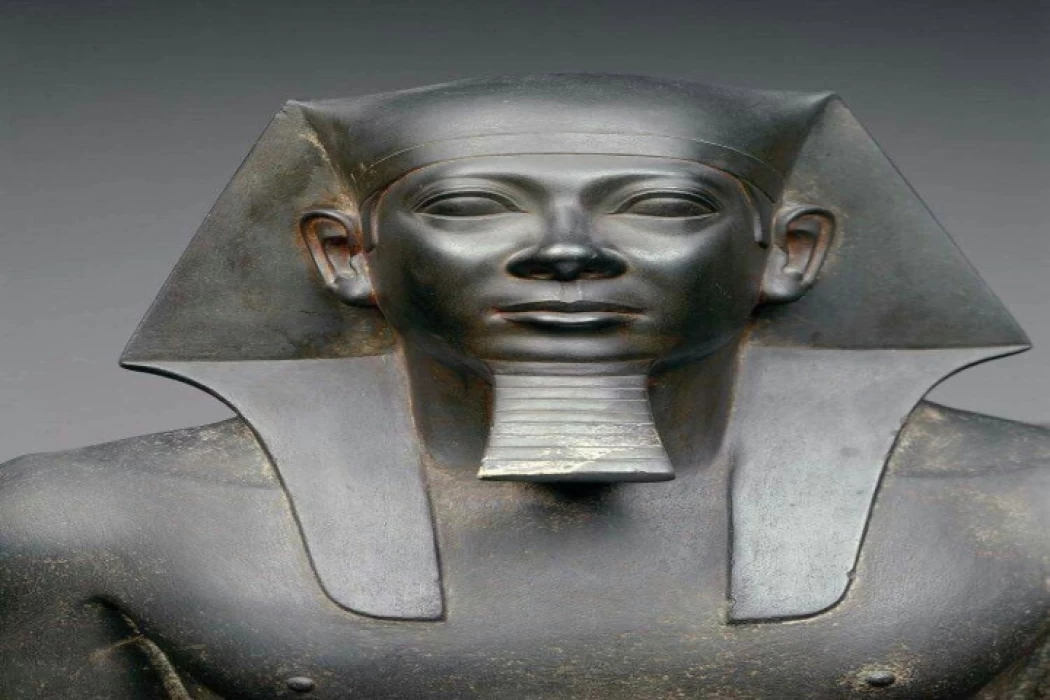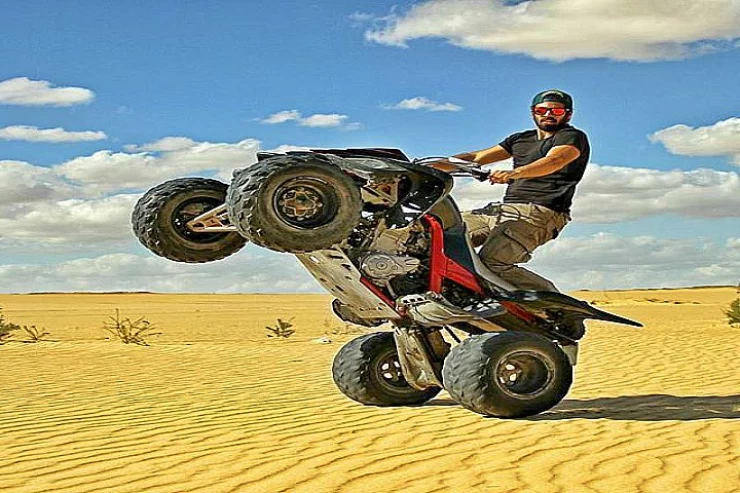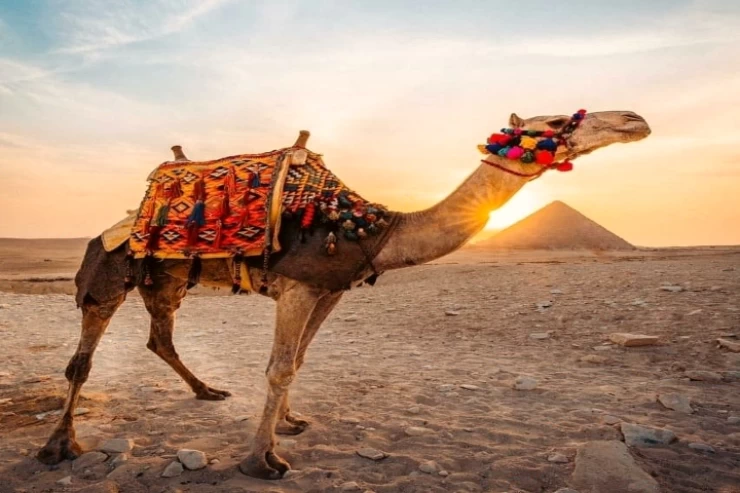
King Menkaure
The king Menkaure
Egypt is divided into several kingdoms, and each kingdom has families known for their welfare; on the contrary, their periods are called the era of decay, and each family has its own special culture and religion. All of this affected the form of Pharaonic construction, as the ancient Egyptians were most interested in religion and the other life, which made them creative in building their tombs and relics that they would take with them to the other world, whether jewelry, gold, or others.
These dynasties include the Old Kingdom dynasties, which built tombs that are considered the largest in the history of the world. These tombs are considered a human miracle that happened with limited means but with the wonderful power of the pharaohs, making them one of the wonders of the world.
One of the most important kings who came to ancient Egypt was King Mankhaura, the owner of the 3rd pyramid in the Giza pyramids. This king was married to his sister, the daughter of King Khafre, who is Queen Khafr Nabti II, but some thought that he was married to more than one wife, and this is not true.
It was confirmed that his mother was the first Kha'Marr Nabti when they found her name inscribed on a flint stone that was found in a funerary temple, as this king is one of the founders of the Egyptian civilization, and scholars also considered that at the end of his era, prosperity, and architecture decreased, as his pyramid is considered the last great work in the Old Kingdom.
The king's name consists of Min Kao Ra, and as usual, this dynasty used to worship the god Ra, so the mention of the word Ra in their names is not strange, so the meaning of this king's name is the one who is similarly like Ra and will continue to be like that.
Several people are referred to as the sons of King Menkaure, but are they all their sons or not?
For example, they said that the king who ruled after him was his son, although he is the youngest son, as his older brother died at an early age, which is King Shebas Skaf, who was the last king of this dynasty, ruled for no more than 10 years, but it was a period full of mystery; despite that, he has two statues that are now in the Louvre Museum in France.
He also built his tomb, now known as Pharaoh's Mastaba in the city of Minaf, where he did a wonderful trick in this tomb, which is that he built two corridors for the burial halls; the first was to mislead thieves into a fake room, and the other corridor was leading to the real burial room and this king was among the kings included in the list of kings in the temple of Abydos who completed the construction of a mortuary temple that was built during his father's reign.
There are many other names referred to as the sons of King Menkaure, like Khent Kaos and Sekhem-Ra, as well as another queen who is said to have died at a young age, as reported by the Greek historian Herodotus.
Many have disagreed about the length of this king's reign, but the most obvious is what is reported in the Turin Papyrus, where he ruled for more than 15 years, but some say that his reign did not reach more than 30 years.
He also has a statue of him and his wife, Queen Kha-Marrar Nabti II, in the Boston Museum. What set King Menkaure's reign apart was freedom, as he gave them more freedom to perform their religious rituals than any other king before him.
So the reign of King Mankaura was indeed a period full of achievements and marvels, the most important of which is, of course, the pyramid he built in Giza, although it is the smallest of the pyramids, it is no less important than the other two pyramids.
Mankaura was known for his religious fixes, so it is likely that he was pursuing a religious policy aimed at maintaining a balance between the different powers in Egypt and that he promoted a balance between religion and politics.
Egypt was still experiencing a certain degree of economic success in the times of this king. Trade with other parts of the world, such as Mesopotamia and the Levant, and, during his reign, the great transfer of natural resources like gold, timber, and precious metals helped cement his power.
Several archaeological discoveries were made in the Giza area, where many funeral furniture and tombs have been excavated, including those associated with King Menkaure. One of the chief finds is the statues of King Menkaure, which have been noted for their splendid sculpture and detailed work.
They also found some important inscriptions from the Giza area that tell a small part of the story of King Menkaure's life and let us know some details of his life and important works in ancient Egypt.
Pyramid of Menkaure
The Pyramid of Menkaure, established for the burial of the most enigmatic of Egyptian kings, served among other purposes as the site for his royal burial, denoting his spirit's power and authority.
The inscriptions and drawings on the inner wall of the pyramid were, therefore, important historical accounts and witnessed some aspects of the longest and most glorious period in Egyptian history- the Old Kingdom.
The color of the pyramid was originally coated in white; this white limestone was now eroded and lost, and after thousands of weathering years, hardly any of its effect remains on the white smooth covering left on the surface.
It is considered much smaller than the other two pyramids, and the lower part of the pyramid was built from a different material than the rest of the pyramids, which is pink granite, and the dimensions of the pyramid base are more than 100 m on all sides.
The construction of the pyramid started in the reign of King Mankaura, and it went on even after his death, which indicates the tremendous architectural hurdles that ancient Egyptians had to experience, which made them a civilization recording splendid history and constructing marvelous civilizations from which people come from different parts of the globe to enjoy the beauty of buildings that the pharaohs left and discover something new and completely different from what he saw before.
The pyramid consists of several funeral halls incorporated in the mortuary design of King Menkaure, such as the primary burial chamber, where the sarcophagus of King Menkaure was once found, is the main hall in the pyramid.
It has several corridors within the structure of the pyramid, which formed part of the religious conception of the king on his journey to the second life.
His temple stood within the pyramid enclosure, just like the other pyramids of Giza. A necropolis next to Menkaure's pyramid was originally used to perform religious rituals associated with the king after his death.
With this pyramid, King Menkaure left his very own imprint on the architecture of the time and the mortuary rites, as one of the great architectural references that reshaped architecture and the religious thought of Ancient Egypt.
In the Egyptian language, the Pyramid of Menkaure was referred to as "Netjer-er-Menkaure," or "Menkaure is divine." This refers to the king for whom this pyramid was constructed to serve as a tomb for his afterlife.He is the builder of the third greatest pyramid in the Giza Necropolis, which ended a great era of architectural magnificence. The Pharaoh is considered to be the son of King Chephren and Queen Khamernebti I. He got married young to his sister, who had become the future queen, Khamernebti II. She bore him a son called Khunre, who probably died at a very young age.
Menkaure was the king who built the third pyramid; in ancient Egyptian, "Netjer-er-Menkaure," "Menkaure is Divine," is what this king's pyramid was referred to in the ancient Egyptian tongue. It is also the termination point in monumental constructions at Giza for a pyramid meant as an afterlife tomb. Menkaure, also called Mycerinus, was born of King Khafra and Queen Khamernebti I. He married Khamernebti II, who became a queen after having a son who was named Khunre and who likely died young. His other son was called Shepseskaf, who succeeded him, and one daughter, Khentkaus I, who probably married Userkaf, the first king of the Fifth Dynasty. No predecessor of Menkaure had ever been rated as wise and benevolent king by the populace, and as such his pyramid was not of much greater size.
However, one could say that the scaling down probably had no solid reason backing it; rather, speculations from a few commentators could turn the economy over it, or that some changed religious ideas that increasingly put funerary temples above erectile pyramids, or even too rigid as the Giza Plateau started to get crowded. The pyramid remained incomplete on the death of Menkaure, as it was finalized under Shepseskaf; the upper part was clad in fine limestone while the lower portion remained harsh granite. Cairo Top Tours will take you on an exceptionally interesting trip to the Pyramids of Giza, including the stunning Great Pyramid of Khufu, the awe-inspiring Pyramid of Khafra, and the notable Pyramid of Menkaure. Also to be appreciated will be the Great Sphinx, the immortal guardian to all within the necropolis. All this will be under the guidance of expert guides who will inform you of the history, culture, and traditions of ancient Egyptians while giving you the perfect possible chance to capture moments to remember at these historic sites.
One could say that scaling down had no solid reason to back it; merely speculation from a few commentators could turn the economy about, or that some changed religious ideas increasingly placed funerary temples above pyramids in terms of erection, or else too rigid as the Giza Plateau began to get crowded. The pyramid was left incomplete at the death of Menkaure and was seen through to completion under Shepseskaf; the upper part of this was clad in fine limestone, while the lower slots were left in rough granite. A trip to Cairo Top Tours promises a high-interest overview of the Pyramids of Giza, including the stunning Great Pyramid of Khufu, the awe-imposing Pyramid of Khafra, and the noteworthy Pyramid of Menkaure. Also included will be the Great Sphinx, an everlasting guardian of all in the necropolis. All this will be under the experienced guides who will narrate to you the history, culture, and traditions of ancient Egyptians while giving you the best possible chance to capture moments to immortalize at these historical sites.
There is no solid ground for this scaling down, but some commentators suggest that it is due to economic reasons, that or some changed religious outlook now putting funerary temples above pyramid size, or due to practical reasons as the Giza Plateau started getting crowded. The pyramid remained unfinished upon Menkaure's death and was completed by Shepseskaf, with its upper part clad in fine limestone while the lower portion was left in rough granite. Cairo Top Tours will take you on a really interesting journey to the Pyramids of Giza, including the wonderful Great Pyramid of Khufu, the majestic Pyramid of Khafra, and also the famous Pyramid of Menkaure. You will also be privileged to admire the Great Sphinx, the immortal guardian of all within the necropolis. All this should be done under the guidance of expert guides who will inform you about the history, culture, and traditions of ancient Egyptians while giving you a chance to capture moments to remember at these historic sites.


















